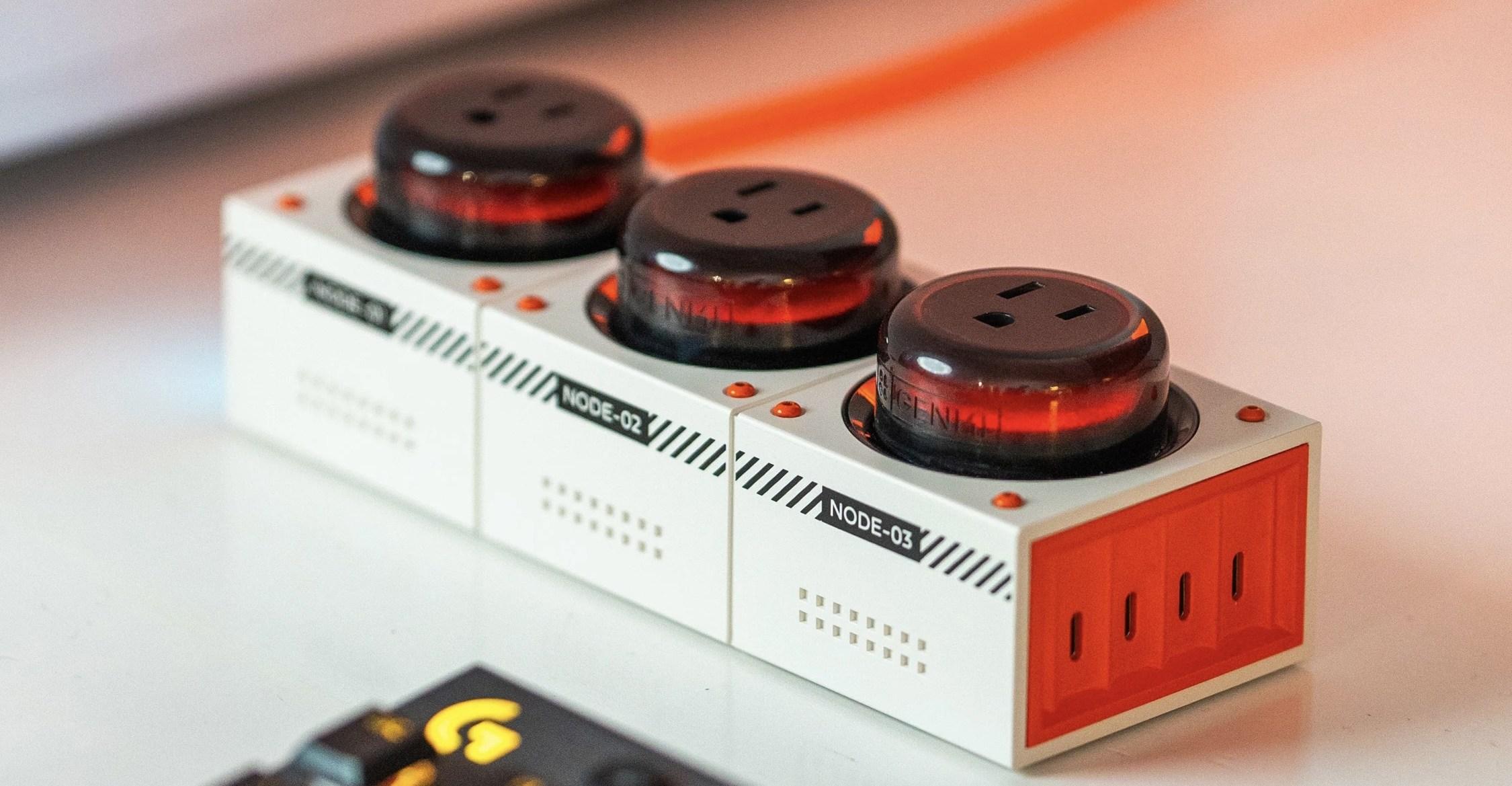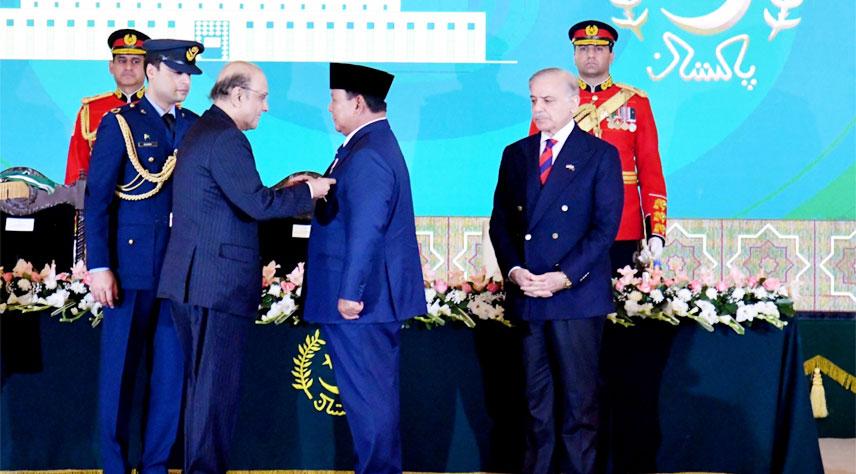We have treatments for opioid addiction that work. So why is the problem getting worse?
We have treatments for opioid addiction that work. So why is the problem getting worse?


The opioid crisis doesn’t get as many headlines as it used to before Covid-19, but the news remains stubbornly, shockingly bad.
Decades into the deadliest drug overdose epidemic in American history, people are dying at higher rates than ever. Between 2017 and 2021, the number of overdose deaths involving opioids jumped from 47,600 to 80,411 — many more Americans than are killed each year by guns or cars. The surge has been largely driven by powerful synthetics like fentanyl, an opioid 50 times more potent than heroin.
Provisional data from the Centers for Disease Control and Prevention show nearly as many opioid-involved overdose deaths in 2022, at 79,770. Overdoses in Black, American Indian, and Latinx communities have been rising even faster, widening the mortality gap between white people and people of color. In 2020, Black men 65 and older died of overdoses at seven times the rate of white men in the same age range.
Meanwhile, the number of Americans struggling with opioid addiction remains staggering. In 2022, 6.1 million people 12 and older had an opioid use disorder, according to the Substance Abuse and Mental Health Services Administration’s most recent annual survey, while 8.9 million reported misusing opioids within the past year.
Looking at these statistics, I thought back to something that addiction specialist Sarah Wakeman told me when I was reporting on the opioid crisis five years ago. “Most people get better,” Wakeman, who is the senior medical director for substance use disorder at Mass General Brigham, said then. “That’s what we don’t ever talk about in the opioids conversation.”
When she says “most people,” she means most people who get long-term medication-assisted treatment (MAT), widely considered the gold standard in addiction care. It combines regular counseling and behavioral therapy with the medication methadone or buprenorphine (often prescribed under the brand name Suboxone). Both contain synthetic opioid compounds, which prevent withdrawal and cravings, and they can lower overdoses by as much as 76 percent. (A third medication, less often used, is naltrexone, which blocks the high from opioids.)
The philosophy of MAT — a departure from the moralizing, abstinence-based rehab and 12-step programs that dominated addiction care for most of the 20th century — began to take shape in the early 2000s, when the Food and Drug Administration approved buprenorphine and a federal law authorized primary care physicians to prescribe it.
MAT shifted the treatment paradigm dramatically. Now, every overdose death is a tragedy, Wakeman told me, not because opioid addiction is unsolvable but because, like so many other chronic illnesses, it’s now very treatable.
So why have we failed to stop or even significantly slow the opioid crisis? Why do nearly 90 percent of those with opioid use disorder still lack access to evidence-based treatment like MAT?
This fall, I got back in touch with Wakeman and posed this question. Is the problem us, I asked her, or is it the opioids? “Oh, it’s definitely us,” she said. The addiction crisis is as much an “ideological challenge” as it is a medical one.
“We, as a society, have spent more than 100 years thinking of and building policies and systems and punishments to address addiction as if it were an issue of morality,” Wakeman said. “And so even though now we’re starting to talk about it as a public health issue, our policies, our clinical approaches, our care models, our funding, really reflect this idea that we actually think people are doing something bad and so we should make it really hard on them.”
This punitive mindset contributes to a disproportionate emphasis on detox, “which happens to be the most lucrative, least effective element of recovery,” as Walter Ling, a UCLA psychiatrist and neurologist whose research helped pave the way for FDA approval of buprenorphine and other opioid addiction medications, put it in a recent op-ed. Even now, many drug rehab centers stress detoxification, meaning going off opioids rapidly, over MAT. A 2020 nationwide survey of inpatient programs found that only 29 percent offered a long-term MAT option; only one in eight residential treatment facilities for adolescents offered buprenorphine for long-term treatment, according to a study last June.
Nearly every clinician I spoke to offered some version of this same observation about how culture and ideology restrict addiction care. “The main thing that’s holding us back is stigma,” said Brown University epidemiologist Josiah Rich, an adviser to the Rhode Island task force on overdoses, who has spent decades providing HIV and addiction care to people locked up in the state’s prisons.
Physician and anthropologist Kimberly Sue, a professor at Yale and the author of Getting Wrecked: Women, Incarceration, and the American Opioid Crisis, told me about treating young people jailed at Rikers Island whose families had cut them off or kicked them out for using drugs. “The US is extremely culturally punitive,” she said. “You know, ‘Pull yourself up by your own bootstraps.’ ‘You made your bed, you lie in it.’ … We’re told that you’re a loser, you don’t deserve to live because you use drugs. You don’t deserve to be healthy.”
Our approach to treatment hasn’t caught up with the science of what works best. “Until the medications came around, our treatment for opioid addiction was mostly a failure,” Ling told me. “Yet we put our philosophy, our idea, ahead of science, ahead of what we know.” That trickles down into how people interact with the health care system — and how structural barriers like racism and poverty compound the damage for those most susceptible to addiction.
The war on drugs laid the foundation for dysfunctional addiction treatment
The face of opioid addiction in America changed dramatically over the past two decades. As overdoses soared in white and rural communities and the crisis was no longer concentrated in cities or communities of color, public discourse around addiction shifted. Experts and policymakers began talking urgently about “deaths of despair” among working-class white people, and a surge of sympathetic media attention sought to understand the problem through this new wave of victims. Americans increasingly began to see addiction the same way medical authorities had for decades — as an illness.
Even so, our treatment paradigm has not caught up. Perhaps the clearest example of how Americans’ cultural mindset limits access to treatment is the onerous regulation of methadone. Patients can receive the medication only at federally certified clinics, which tend to be located in impoverished or high-crime neighborhoods. Most patients must appear at the clinic daily for months or years before they’re allowed to take home even a small number of doses. This means waiting in line, often for hours, missing appointments and work, having to arrange for child care. For some patients, it also means long commutes, sometimes across state lines.
In stark contrast, buprenorphine can be prescribed in doctors’ offices and dispensed by pharmacies. Although the overdose risk with methadone is slightly higher than for buprenorphine, it is stigma, not science, that guides methadone regulations. The medication was initially introduced in the US in 1947 as a pain reliever and cough suppressant; researchers established its effectiveness at treating opioid addiction during the 1960s, amid a spike in heroin use that devastated Black urban communities. Back then, even more than now, Americans viewed addiction through the lens of criminality and deviance rather than disease, so federal regulations put in place in the early 1970s, just as Richard Nixon declared the “war on drugs,” walled off methadone from mainstream medical settings. That’s where it remains today, even though in countries like Canada, the UK, and Australia, where primary care doctors have been prescribing methadone for decades, it’s treated more like a normal medication.
The long lines outside methadone clinics is one of the main reasons people drop out of or never begin treatment with the medication. Because of these restrictions, methadone is “legendarily hated” among drug users, New York University sociologist David Frank, who is in recovery himself and has been taking methadone for 20 years, told me.
In a recent study he published, one participant compared methadone treatment to “liquid handcuffs,” while another described the degrading experience of being told to keep waiting in line after her water broke. “Treatment is not set up to meet the actual needs of the population,” Frank said. “In fact, it’s a barrier to meeting those needs.” Most people come to treatment not because of a commitment to abstinence or even to cure a disease, but “to deal with the fact that the drug they’re dependent on is highly criminalized,” he said. “In my research, this comes up time and again. I ask people, why did you get on methadone? And they always tell the same story as mine: ‘I’m dope sick every day, it’s impossible. I get arrested, I’m scared, my life is falling apart.’ It’s a very pragmatic response. Methadone helps reduce those problems.”
The punitive regulations flow largely from methadone’s history, providers say, from a time when heroin use was closely associated with Black Americans. When buprenorphine received FDA approval 40 years later, the opioid crisis was hitting white America, too. “People’s perceptions about methadone are really frozen in history,” said Paul Joudrey, a Pittsburgh-based addiction care doctor who, along with Frank, is on the board of the National Coalition to Liberate Methadone.
Buprenorphine prescribers are far more common in segregated white communities, while methadone clinics are more prevalent in Black and Hispanic neighborhoods. Patients who are white, wealthy, and well-educated are more likely than Black or Hispanic patients to receive buprenorphine. Patients of color are often directed instead to methadone clinics — and even when they do receive buprenorphine, the average course of treatment is shorter.
Our very ideas of what it means to recover are still bound up with the stigmatized, criminalized history of addiction. A common misconception among the public, experts told me, and even some care providers and people who use drugs themselves, is that recovery with buprenorphine or methadone isn’t “real” recovery; that it just replaces one addiction with another.
“We think of addiction, which is a lifetime-long problem, as being like pneumonia or some other kind of infection,” Ling said. “You come off [the drugs], and then people say, ‘Why can’t they just go back to their old self?’ But they can’t. Substance use has irreversible effects on the body and the brain.” Some people need to stay on MAT for years or decades — and that’s okay, Ling says.
Some experts push this argument further, challenging the notion that being in recovery necessarily means getting off drugs altogether. “My goals for my patients are that they are alive, healthy, and able to have a connected, meaningful life,” said Sue of Yale, who is the former medical director of the National Harm Reduction Coalition. “I do not care how much or what they use in order to achieve that.” For some people, that means strict sobriety; for others, it might mean using drugs less often, or using certain drugs but not others. Sue never mandates abstinence. “The first thing I always ask my patients is, ‘What are your goals, in regards to your substance use?’” Sue told me. “Most people have never been asked that question.”
Providers on the cutting edge of addiction treatment are increasingly moving toward this approach, with greater emphasis on harm reduction, an evidence-based, albeit controversial, strategy that aims to minimize the damaging effects of drug use rather than fixating on forcing patients to get “clean.” In a society raised on the concept of total abstinence from drugs, that can be a tough sell politically — but the idea is that opioid addiction is a serious illness, and breaking an addiction to opioids is extremely hard (as Ling said, patients can’t simply go back to their old selves). Harm reduction is in part about finding an approach that will actually work for people: reaching those who might not otherwise seek care, empowering them to make their own choices, and helping them work toward incremental changes.
Harm reduction measures include safe consumption sites (where people use drugs under the supervision of trained medical professionals), syringe exchange programs (where users can obtain clean needles), distribution programs for naloxone (a medication that can reverse an overdose), and fentanyl test strips (which can prevent overdoses by detecting whether someone’s drugs contain fentanyl). “Any positive change — that’s sort of the mantra of harm reduction,” said Sue.
Cutting-edge treatments don’t mean much if patients can’t access them
A visit last fall with one of Sarah Wakeman’s patients during a checkup in her Boston clinic gave me a glimpse of addiction treatment — and the barriers that work against it. Samuel (who’s being referred to by a pseudonym to protect his privacy) first encountered opioids in high school, when his doctor prescribed them (“pretty heavily,” he said) for a wrestling injury. “I found out that I liked it,” he said, and he became addicted in college, after experimenting with drugs with a roommate. Before long, he wound up on heroin. For several years, his life unraveled: debt, lost jobs, defaulted loans, an arrest, multiple trips to rehab and 12-step programs.
Samuel found his way to Wakeman’s practice a few years ago. He’s stable now, taking buprenorphine — with a job and an apartment and a new puppy. But he told me he’d encountered judgment and distrust from many of the people he initially looked to for help, even those whose job it is to help him, like doctors and psychiatrists. Even now, pharmacists sometimes hesitate to refill his buprenorphine prescription, leading him to stash extra doses so he doesn’t run out, he said, which can be “dangerous behavior” for someone with an addiction.
That stigma compounds the hurdles that are already a part of buprenorphine treatment. Although it’s intended to be a long-term therapy, as a controlled substance, it is prescribed in small increments that must be refilled every few days or weeks. If he’d been any less motivated to get better, he told me, he’s not sure he would have made it — or, he added, if he’d been any less privileged: Samuel is an educated white man in his mid-30s who grew up in a family of medical professionals.
The logistical and ideological obstacles to treatment are, of course, tied to the kinds of people who bear the brunt of the epidemic — those who exist, in one way or another, on the margins of society. Addiction is one of a cluster of interconnected crises unfolding across the country: homelessness, poverty, mental illness, untreated trauma, an epidemic of loneliness. Opioid overdoses spiked in 2020 during the onslaught of Covid-19, in part because people were isolated from each other as well as from treatment. Racism plays a major role in limiting access to treatment, too, as does mass incarceration. There’s a shortage of addiction care providers, particularly in rural America, where the scarcity of basic primary care for all types of patients is increasingly dire.
Until recently, nearly 60 percent of rural people lived in counties without a single doctor authorized to prescribe buprenorphine. (That changed last year, after a law requiring providers to obtain a special waiver to dispense the medication was eliminated.) In Madison, Wisconsin, where Elizabeth Salisbury-Afshar practices addiction medicine, it’s not unusual for patients to travel one or two hours each way to her clinic “for an appointment that’s maybe 30 minutes long,” she says. “It’s a full-day endeavor. But folks don’t have another choice.”
In rural areas, Salisbury-Ashfar said, many of the primary care doctors who would be the first line of addiction treatment are too overwhelmed to provide it. “The providers that we have, we’re just trying not to burn them out, because we are short-staffed on every front,” she said. “We would love to have enough primary care docs to be doing this, but primary care docs can’t keep up with primary care.”
It’s not enough to have a breakthrough treatment like MAT if the people who need it can’t get it — or can’t stay in it. Among the “compounding mistakes and failures” that led to the current crisis is the fact that “our health care system is not set up well to accommodate people who are vulnerable or marginalized,” a group that includes most of those with addiction, said Joudrey, the Pittsburgh addiction doctor. “In the United States, we’ve become so focused on innovation and looking for technological solutions, we can end up neglecting the sociological and economic contributors of the overdose epidemic.”
Joudrey told me about a patient he met years ago in a mobile treatment program. He started her on buprenorphine, which helped her stop using fentanyl, and every year afterward, she would send a thank-you email. “She was just thrilled,” he recalled. But she was also socially isolated and stuck in a dead-end job that didn’t quite pay the bills. This precarity left her at greater risk of falling back into drugs. “The medicine didn’t change her larger social circumstances,” Joudrey said. “As a clinician, as a researcher, it’s sort of grappling with what we can and can’t do, in terms of the limits of health care and medicine.”
We have low-effort interventions that can make a difference
These experiences hammer home the urgent need to build a different treatment architecture to lower overdose deaths. Research has outlined a number of promising approaches. Some have begun gaining traction already, including harm reduction. Although contentious for many years because many believed it enabled drug use, harm reduction has been gaining mainstream acceptance among providers and policymakers. Decades of research, in the US as well as in countries like Canada and Ukraine, show that it saves both lives and money.
Despite halting and uneven progress, a nationwide push to bring MAT into jails and prisons — driven in part by ACLU lawsuits in several states — is picking up momentum. The need for this is urgent: Overdose deaths from drugs or alcohol rose by 600 percent in state prisons between 2001 and 2018, according to the Bureau of Justice Statistics — which estimated in 2009 (the most recent year with national data) that almost two-thirds of incarcerated people have substance use disorders. A 2015 study in North Carolina found that the risk of overdose was as much as 40 times higher for those recently released from prison than for other state residents.
In 2014, Massachusetts General Hospital in Boston, where Wakeman practices, opened one of the first “bridge clinics” in the country, intended to bridge the gap between a patient’s discharge from the emergency room (after, say, an overdose) and longer-term addiction treatment — a critical moment, Wakeman told me, when the risk of relapse or overdose is high. Patients can walk into the bridge clinic without an appointment — from the emergency department down the hall, or simply right off the street — and begin buprenorphine treatment that day. They can also receive psychiatric counseling services, recovery coaching, and nursing care, and the clinic keeps harm reduction supplies for patients still using. If they want to, Wakeman said, people can just have a cup of coffee and “hang out here if they need a place to be okay.”
Bridge clinics have been opening up at other sites, too, including dozens in California alone, and early evidence shows they’ve led to promising rates of MAT treatment and linked patients to longer-term addiction care. Those effects can ripple through other parts of the hospital. One study by researchers in Syracuse, New York, found that emergency department visits dropped by 42 percent in the six months after a bridge clinic opened. Research also indicates that bridge clinics help fill a void in care for patients with “clinically complex” cases: patients with concurrent addictions to other substances, serious mental illness, homelessness, and infections like HIV or hepatitis.
Where primary care doctors are stretched thin, nurses could fill gaps in access to care. Since 2016, federal regulations have allowed nurse practitioners and physician assistants (PAs) to prescribe buprenorphine, but laws in some states, including those hit hard by the overdose crisis, still block them from providing that care. Tennessee explicitly forbids nurses and PAs from prescribing buprenorphine. “So you can’t do everything you’re educated and certified to do,” said Matthew Tierney, a psychiatric nurse practitioner and clinical professor at the University of California San Francisco, who serves as medical director for inpatient substance use management for UCSF Health. Advanced practice nurses, he said, especially those in mental health, “have the education and training to really treat substance related disorders.” When federal rules opened up prescribing to nurses and PAs, they began applying for licenses in higher numbers than physicians.
Bringing methadone care into normal medical settings, like in other countries, would be a huge step in opening up access. Early in the Covid pandemic, many methadone clinics relaxed their rules, allowing more take-home doses and letting family members pick up medications for patients in quarantine — offering a glimpse of what lasting change might look like.
A bill before Congress, the Modernizing Opioid Treatment Access Act (MOTA), would effectively make that permanent, authorizing addiction medicine physicians and psychiatrists to prescribe methadone. Studies indicate that patients are no more likely to overdose or abuse the medication when they’re able to take home a longer supply. In fact, it seems to help survival rates.
Among addiction specialists, opinions about MOTA are, admittedly, not uniform — some worry the bill goes too far and would put patients at risk of methadone overdose, while others think it doesn’t go far enough in expanding access. Rachel Simon, a doctor who practices at the methadone clinic in New York’s Bellevue Hospital, sees MOTA as “a crucial first step” to lowering treatment barriers. “Methadone is a beautiful medicine,” she told me. “The time to make changes was yesterday.”
What if we remove treatment from sterile medical settings?
For some patients, it might help to disentangle addiction care from formal medical settings. Context matters, and making treatment more culturally authentic can succeed where other approaches fail. The Connecticut-based Imani Breakthrough Project, launched in 2017, brings addiction care into Black and Latinx churches as a way to address racial disparities in treatment. Developed by Yale addiction psychiatrists Ayana Jordan and Chyrell Bellamy, the program (“Imani” means “faith” in Swahili) consists of weekly mutual support and recovery education classes alongside individualized coaching and cognitive behavioral therapy, all held in churches.
“This project was really born out of a dire need,” Jordan told me — at a time when Black and Hispanic overdose deaths were climbing, but the media was primarily focused on the epidemic’s white, rural victims.
While they were developing the program, Jordan said, “overwhelmingly, what we found is that people didn’t want to come into traditional care. They didn’t feel safe.” (Black Americans in particular often distrust the medical establishment — with good historical reason.) And for many patients, spirituality was important to recovery, Jordan told me, so the church itself represented a form of intervention: a sacred and familiar space where people in the community felt known.
Originally located in eight churches across Connecticut, the program recently expanded into Rhode Island and New Orleans, with plans to open in Boston and New York City. In 2021, Jordan and her team launched a new version of the Imani program as a five-year NIH-funded project, in which participants can consult with Black or Latinx psychiatrists via telehealth to start MAT in their church. The eventual goal, she told me, is to implement the Imani model nationwide.
According to a study of Imani’s first three years, a striking 42 percent of participants remained in the program after 12 weeks. (There isn’t a perfect comparison to treatment in a standard medical setting, but a 2016 analysis of addiction treatment data found that 20 percent of Black patients and 15 percent of Latinx patients completed their programs, compared to 60 percent of white patients.) Participants also improved their scores on tests measuring wellness and community citizenship. “And we had great outcomes in terms of stopping substance use altogether, or decreasing their substance use,” Jordan told me.
Recalling the early sessions, Jordan said, “We were seeing for the first time an environment that is really clear about the sovereignty of being Black or Latinx.” In a country where the dual identity of being a person of color with addiction means that “you’re totally thrown away,” she said, having a place where “church members alongside people who look like you, welcome you, and also integrate medical practices into the group is extremely powerful.”

Govt does not believe in using NAB for political vendetta: PM Shehbaz
- 17 hours ago

Genki’s colorful, powerful power strip is 25 percent off
- 9 hours ago

The Verge subscription turns one
- 9 hours ago

Manafaingana ny famonjenan’ireo tanalahy mampalaza an’i Madagasikara ireo manam-pahaizana satria efa mitatao ny afo.
- 7 hours ago

Analogue is restocking its 4K N64 and making it more colorful
- 9 hours ago

How the Supreme Court is using Trump to grab more power for itself
- 7 hours ago

Betting scandals broke sports. Could prediction markets do the same to politics?
- 7 hours ago

AI ‘creators’ might just crash the influencer economy
- 9 hours ago

Traditional gender roles won’t get men what they want
- 7 hours ago

OpenAI says it’s disabled ad-like app promotions in ChatGPT
- 9 hours ago

Skateboarding is better in hell
- 9 hours ago

President confers Nishan-e-Pakistan on Indonesian President
- 16 hours ago



